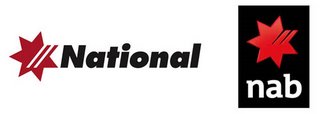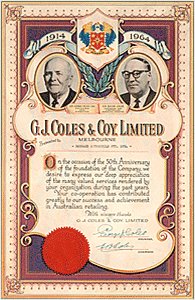
New Myer owner, Newbridge Capital must have recognised something in the ailing Myer chain that others didn’t.
With an extremely modest $A60M estimated EBIT for this financial year, the $1.4B Myer sale price seems pretty high. However, Newbridge [www.newbridgecapital.com] believe in “unlocking value; recognising that value is often hidden in companies”. An item of great value that has been overlooked by Coles Myer Limited is the Myer brand. But "overlook" is perhaps not quite the right word as it implies neglect and Coles Myer can be accused of so much more than negligence.
Single-handedly Coles Myer has re-positioned the Myer brand to a place that has no resonance with its customers or communities, no differentiation from its competitors and no personality [see blog 8/2/06 ‘What’s the real value of the Myer in Coles Myer?’]. In addition, its heritage both as an intrinsic part of the Australian retail landscape, the community significance of the Myer family itself [thankfully now part owner] and in NSW, the richness of the Grace Bros. brand has been ignored [see blog 14/10/2005 ‘No one will save Myer now’].
Myer’s brand is valuable and with some TLC can be resuscitated. New Myer boss Wavish’s starting point of hearing “...what both the staff and customers have to say about the brand before we finalise any of our plans” [Sydney Morning Herald 13/3/2006], is vital. But what DIFFUSION would like to know is how this information is going to be collected, managed and translated into a real, meaningful and living brand?
Newbridge and Wavish need to treat the Myer brand as if it has been through a crisis [which in some ways it has], developing a brand recovery strategy that takes into account the past, the present and the future. The looking back and then forward process should uncover meaning and value that will stand the company in good stead for the long term – an imperative of Newbridge who “focus on investing in companies that have a sustainable long-term advantage over their competitors”. From this, a brand strategy should then be developed as an integral part of the business planning process, to place Myer on target to achieve their real potential of $240M EBIT [The Age 17/3/2006].
As we note in our previous NAB blog, the process of brand valuation is not achieved by a mere whip around to see what everyone thinks but is complex, overarching the whole of business and needs to be properly managed if it is to provide a real and lasting return.

